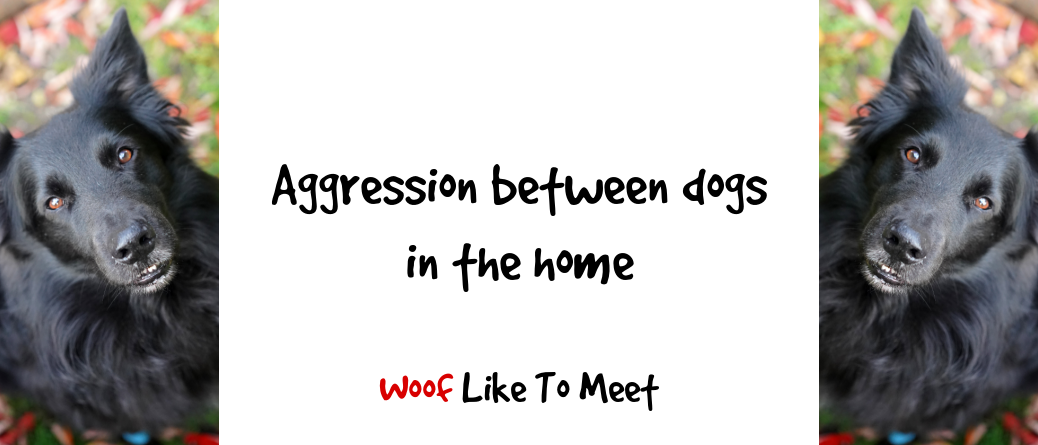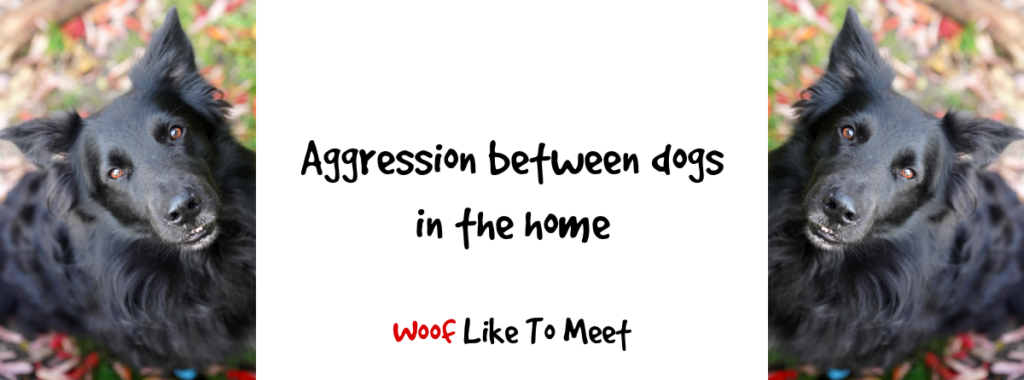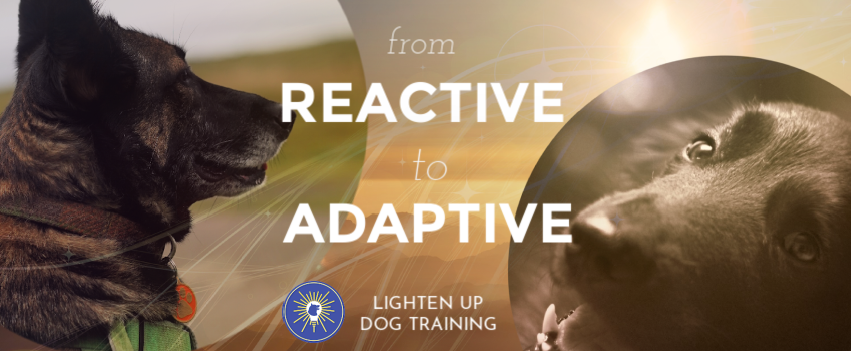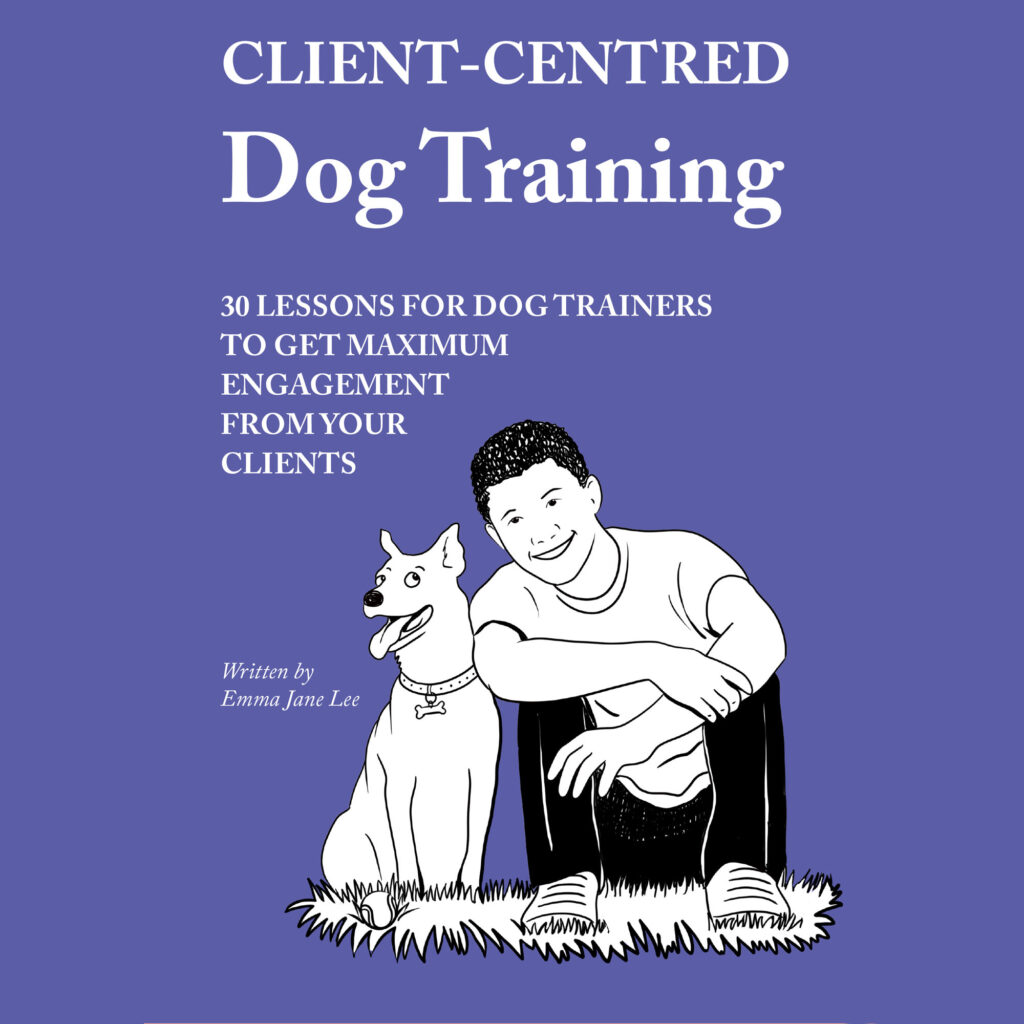Some of the hardest cases to resolve are those that involve fights between dogs in the home. Just to be clear, I’m not talking about the occasional growl or appropriate discussions between dogs here; today, I’m discussing the kind of fights that end up with dogs being taken to the vet. These cases often have the worst prognosis simply because the dogs may need to be heavily managed and also because, unfortunately, many guardians wait until it’s too late to get in touch with a qualified professional.
This is worsened by the old-fashioned view that dogs need to have a fight to sort things out. This is simply wrong. For some dogs I’ve worked with, the single fight has been the fight that killed them. So let’s not continue to perpetuate myths that dogs need to have a fight. This view is often tied up with ideas about pecking orders and hierarchies. I’m not going to go into detail about how complex, nuanced and complicated canine relationships are, suffice to say that what we know suggests that rank and status are given, not taken. That’s to say where a pair of dogs do show unidirectional behaviours which are typically understood to be those of dominance or submission, status is not earned by thrashing your subordinates. Status is given because you’re affiliative. Anyone telling you within five minutes that your dogs are fighting to sort out a pecking order and it’s all about rank isn’t qualified to work with your dogs. Please do not take their advice if they recommend you support one dog or another, or that you punish behaviours. These usually increase aggression, not decrease it.
All this said, surprisingly little is actually known about fights in the home. There have been two studies that cover this. The first is Sherman, Reisner, Taliaferro and Houpt (1996). They looked at 99 case studies from 1983 – 1993. While they didn’t discriminate between dogs who’d just been put together and dogs who’d lived longer together, most of their findings will resonate with what I’m going to discuss further – particularly one trigger which they categorised as ‘excitement’ where 51 of the 78 dogs who’d fought in the home did so in whatever we might unpick from that label. I think that’s my most significant take away from this paper.
The other study is a 2011 study from Wrubel, Moon-Fanelli, Mananda and Dodman. They looked at 38 cases that came to the behaviour clinic in a year.
Because of the sparsity of studies or any academic literature whatsoever, I decided to look at my own case history for the last eight years and to identify key features of the situations. I picked out 100 cases where the dogs had lived together for more than 6 months. I don’t think it’s fair to say that dogs who fight the first time they meet or in the first few days are really familiar with each other. Most of the dogs I work with where there is very severe injury or where one dog has killed another have actually lived with each other for a relatively long period of time.
Both of the published papers are very interesting, but I didn’t feel like they gave us the whole picture. It certainly gave me numbers to confirm or question. Sherman et al. found breed links in their 78 cases, where toy breeds and gundogs were less likely to engage in household conflict, and herding and working breeds more likely. This certainly isn’t replicated in my work, where some of the worst injuries I’ve seen have been between Asiatic breeds and spaniels, as well as terriers of all sizes. No dog breeds were exempt from causing injury and no dog breeds were frequently targeted.
There were other aspects of their paper that I did find to be true in my own case histories, though. They found same-sex pairings much more likely, with females more likely to be involved in in-home fighting. In my 100 cases, I only had two cases of intersex aggression where the fights had ended with one dog going to the vet. They also found that 42 of the 73 instigators were younger, the average age was 4.2 – so these are not babies squabbling – and 43 of the 73 were more recent arrivals in the home. That’s not to say they’d just arrived, but that they’d had less time in the home. My own case studies were more nuanced than this.
Wrubel et al. really consolidated these early findings, bar one or two points, just as my own case history does. They differentiated helpfully between date of onset and date of arrival at the behaviour clinic. The average onset was 36 months – so right on the cusp of social maturity for many dogs – and that the younger dog was often the instigator. The late onset of fighting may suggest then that social maturity is a key factor rather than sexual maturity.
I found there were two age clusters in same-sex injurious fighting. The first cluster happened where an older dog significantly harms a younger dog. The older dog is usually older than 2 years; the younger dog is between 7-11 months. In these situations, the older dog can’t necessarily be said to be the instigator. The younger dog has been engaged in ebullient or exuberant behaviour at times of high energy, such as when guardians return home, when it’s mealtime, when guests arrive. The older dog will often, and with little apparent warning to the guardians, rush over and attack the younger dog. This happens when the younger dog is coming to sexual maturity, and it didn’t matter if the dogs were sterilised or not. There’s often a similar history: a fairly relaxed home where the younger dog hasn’t had much by way of obedience training, and the relationship between the two dogs has been left to them to manage. The older dog has usually been engaged in ‘policing’ or ‘schooling’ the younger dog for some time, often using their bodies to corral or block the younger dog, in the absence of guardian intervention. There haven’t been any fights because the younger dog has always acquiesced, but even so, the behaviour has not decreased. Then, in a hotspot or at a flashpoint, the older dog seems to lose all inhibition and escalates. Many of the wounds are to the head and neck.
The second cluster happens nearer to the two published studies’ average age, when the dogs reach social maturity. In wolves, sexual maturity is often the point at which adult wolves will disperse, or be forced to disperse, from the family group. They reach social maturity long before that. For dogs, the big changes relate to reproduction: they reach sexual maturity when they are still socially immature (kind of a bit like humans!) and it seems to be as the younger dog reaches social maturity that the major problems occur. In these cases, it’s often the older dog that is sent to the vet, and it is also the older dog who instigates the fight. Again, there is a history where the younger dog has been repeatedly ‘policed’ or ‘schooled’ by the older dog, where the older dog has used their body to cut off the younger dog, to block the younger dog or to manage the younger dog. What’s different is that even though these fights also tend to happen in hotspots at flashpoints in the day, the younger dog is relatively well-mannered. Remember, free-ranging dogs and wolves might naturally disperse if they were being threatened by another individual, and dogs in the home can’t do that, so there are issues here about how we manage that. That said, anyone who tells you that free-ranging dogs don’t fight within their group probably hasn’t looked at a lot of footage. Fights do happen, and we have no data to say how that compares to dogs who live their lives fully restrained by fences, gates, walls and doors. If I had to assign any kind of motivation to these fights, it’d be a younger dog who has tolerated antisocial or harassing behaviours from an older dog for a long period of time and then just gets to the end of their tether.
A third common factor often relates to the health and role of peacekeepers. In France, it’s not unusual for many people to have more than one dog, unlike the UK. We should always ask about dogs who were not involved in the fight and what their role is. It’s not unusual, although it’s not very common, to find that an older dog has been playing peacekeeper between two dogs who really don’t seem to have a smooth relationship, but when their health changes and they aren’t keeping the peace, fights break out. You can see why people might interpret this as something to do with a pecking order and make up fictions about how the two younger dogs are fighting to be top dog. It’s not the case, but we do need to realise that sex hormones are important, otherwise the fights would be random between sexes and they are not, and that age is also important, otherwise we wouldn’t be seeing these repeated patterns of behaviour across families. In my opinion, these two factors are much more important than breed.
While we may think that dogs who guard resources like food or toys, or who have trouble accepting other dogs in their space when they are resting or being petted, are probably the issue, this isn’t often the case. These situations can often be managed relatively easily in my experience, as long as we know what’s causing it. Sensible dogs who have good canine codes will always be aware of the situation. Just as an example, my two current dogs have never, ever fought. There are occasional growls both ways, but Heston has such wonderful understanding of other dogs that he is always respectful. For example, if Lidy is on his preferred couch and not on her own, and he wants to get up there, he stands looking at her for a couple of minutes and then gingerly, with such care and caution, he gets up very slowly when he can see she is watching him. One of my DoGenius students sent me a wonderful video of an elderly female dog who had a bone and a younger male terrier who wanted it. He let her know he’d really like it, without being obnoxious (okay, a little, as only socially immature individuals can be!) and she relinquished it. My favourite moment was just how slowly she relinquished it and just how slowly the terrier went in to get it. Both are examples of how dogs are aware of what the other will find offensive and how they moderate their own behaviour so as not to cross the line. I always feed my two in different rooms if possible, and if Lidy hasn’t quite finished, or Heston hasn’t quite finished, both will wait patiently until the other has got up and moved away.
We can always manage our dogs by teaching them moderation around other dogs or by giving them clearly defined spaces. Never, ever have I let a dog go and stick their face in the bowl of another, for example. Never expect dogs to just be naturally polite. I grew up with siblings and, out of the view of our parents, any goodies on our plates were fair game unless we protected them. My brother still has the scars from where I stabbed him with a fork. There’s a lot of talk about ‘self-regulation’ in the dog world at the moment, mostly from people who don’t really understand it and use it as a more politically correct version of ‘impulse control’. For reasons I don’t quite understand, teaching dogs to control themselves seems to be going out of fashion, mainly for the same reasons that I don’t like leaving dogs to police the behaviour of younger, more exuberant dogs, I guess. Because teaching impulse control perhaps smacks of coercion, it’s fading out of fashion and some dog trainers are now calling it ‘self-regulation’. It’s not, and they’re different, and we’ll get into that in the next post, but co-regulation is a thing and we perhaps need to be remembering that we don’t expect human children to self-regulate without scaffolding their attempts through co-regulation first. More on that to follow, I promise! Needless to say, since I know Lidy finds it hard to let Heston jump into the car after her and she’ll often growl at him perhaps because he’s exuberant and excited by the car, and it takes a bit of energy for him to hop up these days, she goes in second. He gets in first because he has no problem with her hopping in after him, and she goes second. If I had to explain it, I’d say she probably is afraid he’ll bounce her. He won’t, but her growl reminds him not to. I’m sure someone else would explain it as her guarding her space, so you can see why I’m not a fan of explanatory fictions. I don’t know why she growls if she goes in first: she just does. This is resolved by her going in second. Whatever the cause, the solution is the same.
Resources, space and access to human attention were three relatively common triggers across the two published studies and my own case history, but all were trumped by what Sherman et al. called ‘excitement’. For me, we need to unpick this a little. In my own case histories, fights often happened in predictable spaces. These spaces were small and narrow, like doorways, windows, under tables, behind chairs, in corridors, on landings, in hallways, at gates, in cars or at fence-lines. I know it feels a bit ridiculous to think that a fence-line if it opens onto a 4-acre garden is a ‘small and narrow’ space, but the fence acts as an invisible magnet in many cases. I call these places hotspots.
Coupled with these hotspots, a flashpoint is a change of energy or emotion, or the introduction of an environmental change. For some dogs, that could be someone walking past outside the window, or their guardian returning home. It could be guests arriving, or doorbells ringing. It could be cars going past or the excitement of going on a walk. Sometimes, it’s something as trivial as a guardian standing up. I’ve worked with dogs who were sleeping peaceably in their beds until the guardian stood up and then they attacked each other. Managing these flashpoints and hotspots is a key factor in facilitating healthy relationships within the home.
Working with dogs who are fighting in the home is far too complex to discuss in a short article such as this, and it’s incredibly individualised. It’s about the dynamic between the dogs and the relationship they have with their guardian. It’s fuelled by hormones and social bonds. That said, good management and support from the humans can avoid dogs having to sort it out for themselves, particularly where the stakes are high. It’s not a solution, but it can be preventative. We need to be mindful of those hotspots and flashpoints, as well as resources, space and human attention.
You may have noticed my absence over the past couple of months… I’ve been working on two things and I’m so very thrilled to be getting to the point where I can share them.
The first has been working with a team of Early Years specialists in the UK, colleagues from another lifetime, on understanding what we know about regulation in young children. We had the privilege of working with an educator whose work defies categorisation and labelling but she works with young children to help them learn from the world around them, from fungi and plants to other human beings. I’ll be posting some things about that work on emotional co-regulation and how it might relate to dogs over the coming weeks.
I’ve also started work on a project I’ll be launching in August that builds on this. I’m hugely excited by this, I have to say. It started off as a book but it got too big and too readerly, so it’ll be an ongoing blended project that I hope will bring a joyful, energising and inspiring twist to our work with dogs who are struggling to adapt to our modern world. Lighten Up Dog Training feels like the beginning of something very fresh and also very important. I work so often with dogs who are struggling to cope emotionally. Be it predatory impulses, lack of behavioural inhibition, poor social skills, fractured or fraught relationships, anxiety, fearfulness or frustration that often culminate in all kinds of maladaptive behaviour, having spent eight years specialising in improving the lives of dogs like these, I feel ready to share. Or, at least, I will be by September. I’m in the final stages of putting everything together, but it will be truly multimodal with dedicated troll-free chat groups, live sessions, coaching, technical guides, vidoes, How To sheets and case studies. Yes, it’s massive. Yes, it scares me! Yes, it’ll be HIGH quality and cheap as chips. Some bits and pieces will be going out before the big launch in September, so feel free to share if you see them and you value them!
It also means that I’ll be able to keep Woof Like To Meet open to support rescue dogs and rehomed dogs as I originally intended it.
I’ll be sharing stuff over the next five months in anticipation of the big launch so keep your eyes open!
Don’t forget you can also buy a copy of my book Client-Centred Dog Training if you’re a dog trainer looking to improve your relationship with your clients and improve your results. I have it on good authority that it’s not too bad at all.




